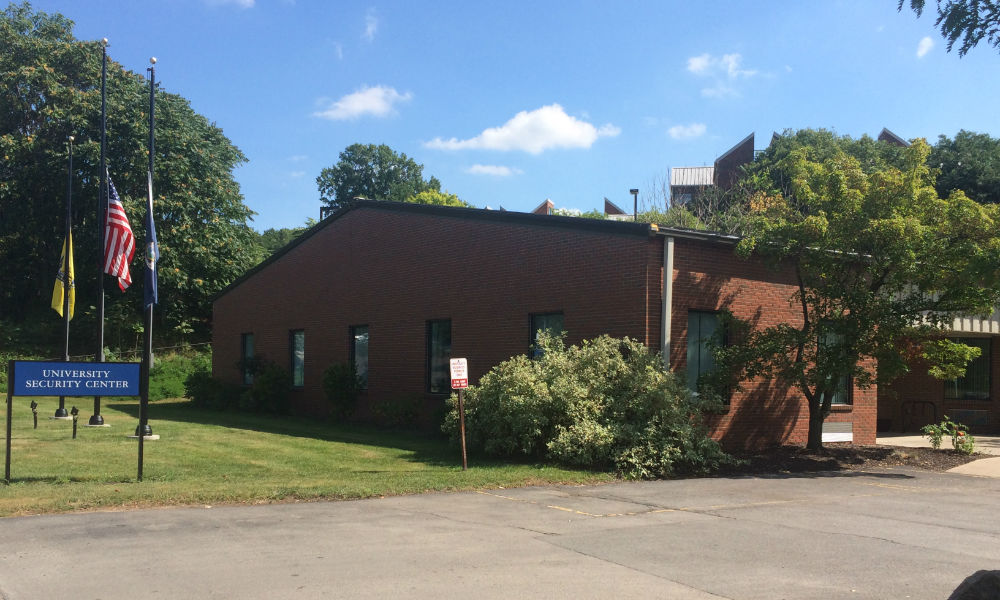
| River Campus | Public Safety
Center |
 |
| Public Safety Center |
The City of Rochester established a "Pest House" on this site around 1868 and it was used as a smallpox hospital in the late 19th Century, when it was named Hope Hospital. This closed in 1903 and was burned on May 10, 1904. Michael E. Sweeney established a gravel and asphalt company around 1915. His firm was bought by the Koppers Company of Pittsburgh in 1949. The University bought the property in 1967 and the student Summer Theater used an old warehouse to stage plays through 1977.
A new maintenance and transportation building was opened at 612 Wilson Boulevard in April 1984. The building housed offices and maintenance shops for River Campus facilities, which moved there from 1236 Plymouth Avenue South, where they had been since 1966.
Most of the facilities offices were moved to the new University Facilities Center at 271 East River Road in June 2008, which was formerly the Nuclear Structure Research Laboratory. The remaining facilities occupants moved out in 2014, with only the auto shop remaining in the building.
University Security moved into the building from the Towne House in August 2008. Security was renamed Public Safety on September 1, 2013.
| Directors of Security and Public Safety | |||||
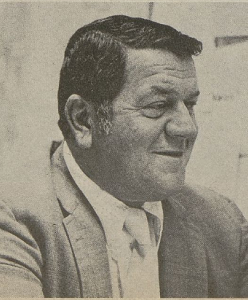 |
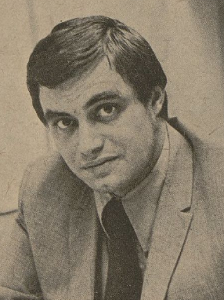 |
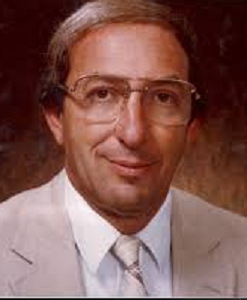 |
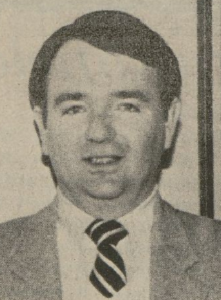 |
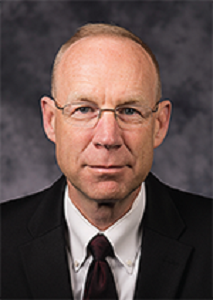 |
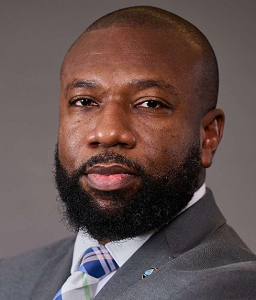 |
| James Evangelos | John R. Schwartz | Andrew J. Meloni, Jr. | Walter Mauldin | Mark Fischer | Quchee Collins |
The University outsourced security at the Medical Center to the Pinkerton National Detective Agency in 1961 and extended their contract to cover the entire University in 1964. A permanent security force was established in 1967 with the hiring of James Evangelos, replacing the Pinkertons.
References
| Also see History
of Campus Technology and Summer Theater
|
1949 "Koppers
Buys Plant Producing Road Materials," Democrat and Chronicle,
February 17, 1949, Page 21.
1961 "Pinkerton Men Now
on Guard," University Record. 1(1):8 (July 1961)
Better protection for the personal safety and property of the University
employee will result at the Medical Center from the activities of the
Pinkerton men who have been on duty since March 15.
The Pinkerton National Detective Agency has entered into a contract to
establish and maintain a comprehensive security program for the Medical
Center.
Members of the security units of the Atomic Energy Project and the school
and hospital were offered other positions in the University, according to
Ray Whitley, supervisor of Employment.
Richard Knowles, who was the captain of the Atomic Energy Project’s
security unit, is now acting as a special assistant to Steve Thompson,
business manager of the Atomic Energy Project, and Harold Duerr, who was
captain of the Medical School-Hospital security unit, is now an
administrative assistant. Among other duties he has been given, Harold is
acting as administrative liaison to help establish the new program.
The Pinkerton group is headed by Capt. Malcolm Hunter. Twenty-four hour
security will be maintained at the Medical Center.
1963 "Pink’tons Expand
University-Wide," University Record. 3(8):2 (September 1963)
University-wide professional security is now available with the expansion
August 26 of the activities and personnel of Pinkerton’s National
Detective Agency’s group stationed here, assistant business manager
Richard J. Susat reports. Pinkerton men have been in charge of security at
SMH for almost three years.
Previously, for the most part, there had been only a night fire watch at
the River Campus, Eastman School of Music and the Memorial Art Gallery.
Now, there is 24-hour fire and other disaster watch along with guard
activities.
Besides the personnel on foot, there will be three mobile units available
and cruising at all times.
Foot and mobile units are two-way radio equipped and in constant
communication with the security central office located at SMH.
Security chief Malcolm J. Hunter, in charge of the Pinkerton group,
explained that the main purpose of their system is to prevent trouble by
keeping it beyond the perimeter of the areas they are responsible to
guard. Sufficient protection is achieved by his men being uniformed, being
easily and often seen, and by being equipped with the two-way radios.
To make the coverage more efficient and complete, a uniformed woman has
joined Mr. Hunter’s staff. Because of the expansion of Pinkerton
coverage, his staff has about doubled.
For a slight additional expense, University officials are most happy to
have the many added benefits the Pinkerton group will bring to the
University every hour of every day.
1967 "Thompson
Appoints Evangelos to New Security Officer Post," Campus Times,
October 13, 1967, Page 1.
The appointment of a university security officer at UR was announced today
by LaRoy B. Thompson, university vice president and treasurer.
Named to the newly created post was James Evangelos, who has been director
of security and supervisor of campus police at Northwestern university
(Boston) since 1963. Evangelos, who will come to Rochester in
mid-November, served for 22 years with the Massachusetts State police. He
retired as a lieutenant in 1963.
The appointment is the first step in the organization of a university-wide
security force, Thompson said. The decision to establish such a force came
after more than a year of study by university officials and follows the
recommendation of John Powell, director of security at Yale university who
served as a consultant during the study.
Thompson noted that "the university's growth, both in numbers and in the
size and complexity of its physical plant, have brought increasing needs
for security services. UR today is a community of some 10,000 people. Like
any community of this size, it needs a variety of services related to fire
protection, traffic flow, parking, and both continuing and emergancy
protection of people and property.
"In addition, the large volume of new construction on campus and the
likelihood that such construction activities will continue for the next
several years have brought increased needs for protective services.'
As university security officer, Evangelos will direct and coordinate a
university-wide security program, including services for the protection of
students, faculty, staff, patients, and visitors and their property while
on university premises; services for the control of traffic and parking;
and services for the protection of university-owned and leased properties,
equipment, and materials.
Evangelos also will recruit and supervise the new security force and will
direct outside agencies which may be used inthe operation of the security
program. He will report directly to Thompson.
The size of the security force will be determined after Evangelos has had
an opportunity to become familiar with the university's needs, Thompson
said. He noted that the university will have a continuing need for the
auxiliary services of the Pinkerton agency, which has provided the primary
security services on campus for the past several years.
1967 "Exec
Council Meets," Campus Times, October 24, 1967, Page 1. | Part
2 |
A nearby asphalt plant has been purchased by the University. The
building has a floor area greater than that of Todd, and hopefully, it
will be turned over to the student body. However, President Wallis
is as yet withholding judgement.
1975 "Chief
Proposes New Methods Against Theft," Campus Times, September
17, 1975, Page 1. | Part
2 |
John R. Schwartz, who became UR Director of Security and Traffic on
September 1, 1975.
1977 "John
Schwartz Resigns Post," Campus Times, April 4, 1977, Page 1.
| Part
2 |
Will assume position at Binghamton. Director of Security since 1975.
1977 "New
UR Security director Anxious to serve students," Campus Times,
September 14, 1977. Page 1. | Part
2 |
Andrew Meloni, new director of Security, who assumed his position on May
26, 1977. Formerly the Public Safety Administrator for the County of
Monroe.
1978 "Michael
Sweeney, building contractor," Democrat and Chronicle, September 8,
1978, Page 2B.
Michael E. Sweeney, a building contractor in the Rochester area for more
than 55 years, died Wednesday in his home, 1 LaCroix Court, Irondequoit.
He was 93. Sweeney built homes on Newcastle Road and on Southern Parkway
in Brighton. He built or resurfaced many city and town streets and helped
build Obituaries the Barge Canal. He started a crushed stone business at
612 River Blvd., now Wilson Boulevard, in 1915 and converted it into an
asphalt plant in 1940. After selling the business to a Pittsburgh company
in the late 1940s, Sweeney continued as a consultant to the company until
he was 80.
1980 "UR
Security examined after break-ins," Campus Times, January
23, 1980. Page 1. | Part 2 |
Joseph G. Rauber has replaced Andrew Meloni as acting Director of Security
and Traffic after Meloni resigned to become sheriff of Monroe County.
1980 "Security
Director Maudlin outlines Plans," Campus Times, September
12, 1980. Page 1. | Part
2 |
Since his arrival in mid-July, Maudlin has been working on organizing the
department.
1984 "Dedication
ceremonies held for Maint.-Transportation Facility," Currents,
April 20, 1984, Page 3.
The University’s new Maintenance-Transportation Facility, designed to
centralize the operations of the River Campus Physical Plant and the
Transportation departments for greater efficiency and economy, was
dedicated last week.
President Robert L. Sproull and Provost Richard D. O’Brien spoke at a
ribbon-cutting ceremony held Friday morning, April 13, at the site on
Wilson Boulevard, former home of the University of Rochester Summer
Theatre.
The 28,000 sq. ft. prefabricated steel building replaces the former
Physical Plant headquarters at 1236 Plymouth Ave. S. All Physical Plant
service groups are expected to be moved into the structure by the end of
April.
The new facility is divided into three sections to accommodate offices and
shops, supply stores, and garage and maintenance spaces for transportation
and buildings and grounds vehicles.
When the project was announced last year, Alan L. Heyneman, associate vice
president for administration, said advantages of the new facility would
include improved accessibility of the shops, savings in vehicle use and
staff travel time from the Plymouth Avenue headquarters, and the release
of more storage and work space in River Campus buildings where such space
is in short supply.
Those savings, he said, would offset the cost of the new structure in no
more than 10 years.
Trade groups to have space in the new unit, which has Harvard brick on the
front to conform to campus decor, include carpenters, painters, masons,
refrigeration-air conditioning workers, electricians, steam fitters,
plumbers, preventive maintenance mechanics, and building and grounds
service staffs. Their shops previously had taken up about 6,900 sq. ft. of
space in River Campus academic buildings, mostly in basements, in addition
to workrooms at the Plymouth Avenue facility.
Work on the project began last June.
1984 Report of the
President 1983-84
Page 12: The University's new Maintenance-Transportation Facility,
designed to centralize the operations of the River Campus physical plant
and the transportation departments, was opened by President Sproull and
Provost O'Brien. The 28,000-square-foot prefabricated steel building
stands on Wilson Boulevard.
2013 "UR steps up security with 25 peace officers," Democrat and Chronicle, May 16, 2013, Page B1 | Part 2 |
2013 "University
to Introduce Sworn Peace Officers this Fall," @Rochester,
September 10, 2013
This October, the University of Rochester will have a mixed force of sworn
and non-sworn officers. Sworn peace officers will have enhanced abilities
and tools, adding to the safety, enforcement, and investigative services
at the University.
Additionally, to more accurately reflect the purpose and services of the
department, the University's Department of Security Services has changed
its name to the Department of Public Safety, effective Sept. 1.
2013 "Peace officers to deploy next month," Campus Times, September 12, 2013, Page 1
2013 Mark
Fischer to succeed Walter Mauldin as public safety director, Currents,
November 20, 2013
Mark Fischer, who has served as deputy director to Mauldin since 2011 as
part of a succession plan, will succeed him on Dec. 1.
As senior advisor, Mauldin will focus on assessment and developing
proposals and recommendations pertaining to programmatic initiatives,
policy, state and federal compliance, and national best practices.
Mauldin joined the University in 1980 as director of Security Services—at
the age of 27. He came to Rochester from the University of Oklahoma, where
he earned a bachelor’s degree in law enforcement administration and worked
for the OU Police Department for eight years in patrol, investigations,
planning, and training. There, he also created and directed a 400-hour
state-certified course for university police officers.
2021 Public Safety Chief Mark Fischer to retire at the end of July, April 23, 2021
2024 Quchee Collins appointed inaugural associate vice president of public safety, May 29, 2024
© 2021 Morris A. Pierce